Bruise Discoloration: Understanding Causes, Healing Stages, and When to Seek Medical Attention
What causes bruises to change color. How long does it take for a bruise to heal. When should you be concerned about a bruise. What are the stages of bruise healing. How can you speed up bruise healing at home. What are the warning signs that a bruise requires medical attention. How does skin tone affect bruise appearance.
The Science Behind Bruise Formation
Bruises are a common occurrence in everyday life, often resulting from minor injuries or accidents. But what exactly happens beneath the skin when a bruise forms? Understanding the science behind bruise formation can help us better comprehend the healing process and recognize when medical attention might be necessary.
When an injury occurs, small blood vessels called capillaries beneath the skin’s surface can rupture. This damage causes blood to leak into the surrounding tissues, creating the characteristic discoloration we associate with bruises. The body’s natural healing process then kicks in, gradually breaking down and reabsorbing the trapped blood.

Factors Influencing Bruise Formation
- Force of impact
- Location on the body
- Individual’s age and overall health
- Medications (especially blood thinners)
- Skin tone and thickness
Do certain areas of the body bruise more easily than others? Indeed, areas with less fatty tissue or those closer to bone, such as shins, knees, and elbows, are more prone to bruising. Additionally, as we age, our skin becomes thinner and less elastic, making bruising more common in older adults.
The Colorful Journey of Bruise Healing
One of the most intriguing aspects of bruises is their ever-changing appearance as they heal. This kaleidoscope of colors is not just a visual spectacle but also a useful indicator of the healing progress. Let’s explore the typical color changes a bruise undergoes and what each stage signifies.
Stages of Bruise Discoloration
- Red (0-2 days): Fresh, oxygen-rich blood creates the initial red appearance.
- Blue/Purple (1-5 days): As oxygen depletes, the bruise darkens to blue or purple.
- Green (5-10 days): The breakdown of hemoglobin produces biliverdin, giving a greenish hue.
- Yellow (7-14 days): Further breakdown leads to bilirubin formation, causing a yellow tint.
- Brown (10-14 days): The final stage before fading completely.
Why do bruises change color as they heal? The color changes reflect the body’s process of breaking down hemoglobin, the compound that gives blood its red color. As hemoglobin degrades, it produces various pigments that create the spectrum of colors we observe in healing bruises.

Factors Affecting Bruise Appearance and Healing
While the general progression of bruise colors is fairly consistent, several factors can influence how a bruise appears and how quickly it heals. Understanding these variables can help individuals better interpret their bruises and manage their expectations for healing time.
Skin Tone and Bruise Visibility
How does skin tone affect the appearance of bruises? Research has shown that skin tone can significantly impact bruise visibility and color progression. Individuals with medium skin tones often display more red and yellow hues in their bruises, while those with darker skin tones may have bruises that appear darker overall. This variation is due to the different amounts of melanin present in the skin, which can mask or alter the visible colors of the underlying bruise.
Age and Bruise Healing
Does age affect how quickly bruises heal? Generally, older adults may experience slower healing times due to thinner skin, decreased circulation, and potential medication effects. Conversely, children and young adults often heal more quickly due to their more robust circulatory systems and skin elasticity.

When to Seek Medical Attention for a Bruise
While most bruises are harmless and heal on their own, there are instances when a bruise may signal a more serious underlying condition. Recognizing these warning signs is crucial for ensuring proper medical care when necessary.
Warning Signs That Require Medical Evaluation
- Bruises that cause numbness or loss of function in a limb
- Bruises that continue to grow in size
- Bruises that last longer than two weeks
- Recurring bruises in the same location
- Bruises accompanied by a broken bone
- Unexplained bruising on the abdomen, head, or trunk
- Bruises causing vision impairment
When should you be concerned about a bruise that won’t heal? If a bruise persists beyond two weeks without showing signs of improvement, it’s advisable to consult a healthcare professional. This could indicate an underlying condition such as a hematoma, which may require medical intervention.
Understanding Hematomas: When Bruises Become More Serious
A hematoma is a more severe form of bruising that occurs when a larger amount of blood becomes trapped within the tissues. Unlike typical bruises, hematomas may require medical attention due to their potential complications.

Characteristics of Hematomas
- Larger and more swollen than typical bruises
- May feel firm or lumpy to the touch
- Often more painful than regular bruises
- Can take longer to heal
- May require medical intervention in some cases
How can you differentiate between a bruise and a hematoma? While bruises tend to change color and gradually fade over time, hematomas often maintain their size, firmness, and level of pain for an extended period. If you suspect you have a hematoma, especially if it’s causing significant discomfort or affecting your daily activities, it’s best to consult a healthcare provider for proper evaluation and treatment.
Home Remedies and Treatment Options for Bruises
For most minor bruises, home care is sufficient to promote healing and alleviate discomfort. Several tried-and-true methods can help speed up the healing process and reduce the appearance of bruises.
Effective Home Treatments for Bruises
- Ice therapy: Apply ice packs wrapped in a towel for 15-20 minutes at a time to reduce swelling and minimize bruise size.
- Elevation: Elevate the affected area to reduce blood flow and minimize swelling.
- Compression: Use an elastic bandage to provide gentle compression and limit swelling.
- Topical treatments: Apply arnica, vitamin K, or bromelain creams to potentially speed up healing.
- Hydration and nutrition: Stay well-hydrated and consume foods rich in vitamins C and K to support the healing process.
How can you speed up bruise healing at home? The RICE method (Rest, Ice, Compression, Elevation) is a well-established approach for managing minor injuries, including bruises. Additionally, ensuring proper nutrition and hydration can support your body’s natural healing mechanisms.

Prevention Strategies for Reducing Bruise Occurrence
While it’s impossible to prevent all bruises, certain strategies can help minimize their occurrence and severity. By taking proactive measures, individuals can reduce their risk of bruising and promote overall skin health.
Tips for Minimizing Bruise Risk
- Wear protective gear during sports and physical activities
- Improve balance and coordination through exercise to prevent falls
- Ensure adequate vitamin C and K intake for stronger blood vessels
- Use handrails and remove tripping hazards in the home
- Be mindful of medication side effects that may increase bruising tendency
Can dietary changes help prevent bruising? A balanced diet rich in vitamins C and K can strengthen blood vessels and improve the body’s ability to heal from minor injuries. Foods such as citrus fruits, leafy greens, and berries are excellent sources of these essential nutrients.
The Role of Medical Interventions in Severe Bruising Cases
While most bruises heal on their own, some cases may require medical attention. Understanding when and why medical interventions might be necessary can help individuals make informed decisions about their health care.
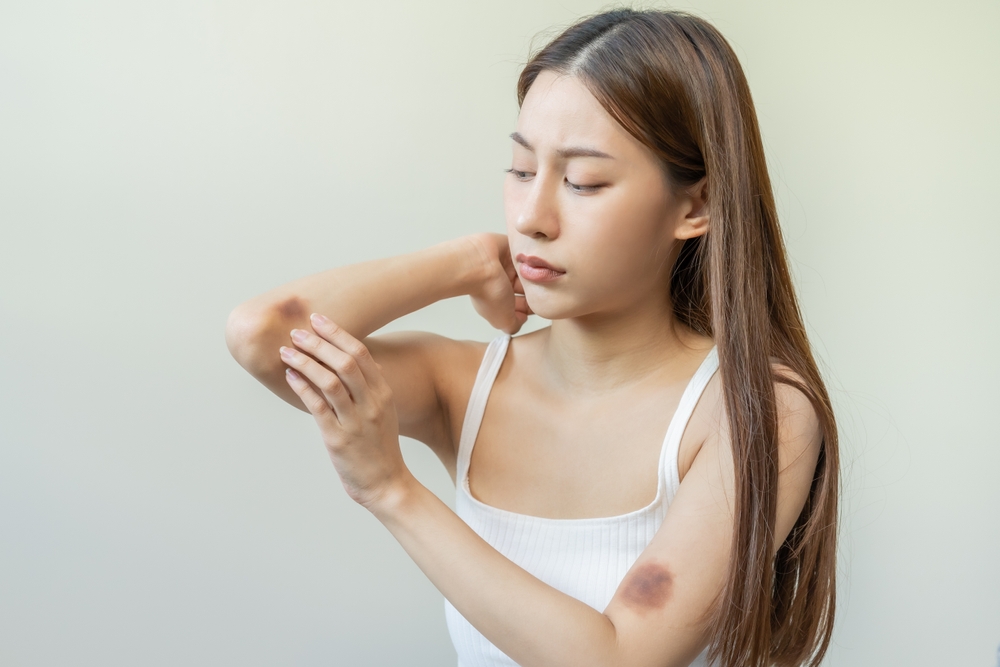
Potential Medical Treatments for Severe Bruising
- Diagnostic imaging: X-rays or ultrasounds to rule out fractures or internal bleeding
- Medication adjustments: Modifying blood-thinning medications if they’re contributing to excessive bruising
- Drainage: In cases of large hematomas, a doctor may need to drain the accumulated blood
- Vitamin K injections: To help with clotting in severe cases
- Surgery: Rarely needed, but may be necessary for very large or complicated hematomas
When might a doctor recommend drainage for a bruise? Drainage is typically considered for large hematomas that are causing significant pain, affecting mobility, or not improving with conservative treatment. This procedure can help relieve pressure and promote faster healing.
In conclusion, understanding the causes, progression, and treatment options for bruises can empower individuals to better manage minor injuries and recognize when medical attention is necessary. By staying informed and attentive to our body’s healing processes, we can ensure optimal recovery and maintain overall skin health.

Causes, timescale, and when to see a doctor
We include products we think are useful for our readers. If you buy through links on this page, we may earn a small commission Here’s our process.
Medical News Today only shows you brands and products that we stand behind.
Our team thoroughly researches and evaluates the recommendations we make on our site. To establish that the product manufacturers addressed safety and efficacy standards, we:
- Evaluate ingredients and composition: Do they have the potential to cause harm?
- Fact-check all health claims: Do they align with the current body of scientific evidence?
- Assess the brand: Does it operate with integrity and adhere to industry best practices?
We do the research so you can find trusted products for your health and wellness.
Read more about our vetting process.
Was this helpful?
Bruises happen when something damages small blood vessels in the skin. Over time, a bruise can appear red, purple, or darker than the surrounding skin. It may then progress to blue, black, or green.
Over time, a bruise can appear red, purple, or darker than the surrounding skin. It may then progress to blue, black, or green.
Bruising typically occurs when a person receives an injury to an area of their skin, such as from falling or bumping into something.
The blood vessels between the skin and other tissues in the body burst. The blood pools under the surface of the skin, causing a bruise. It is natural for a bruise to change color during the healing process.
Read on to learn more about the usual cycle of bruising, and when a person should see their doctor about a bruise, for example, when it does not heal, returns or the pain intensifies.
A person may be able to estimate how old a bruise is from the color. As the body heals and breaks down the hemoglobin, or compound that gives blood its red color, the bruise will change in color. This is a regular part of the healing process.
However, skin color affects the appearance of a bruise. Those with medium skin tones had more red and yellow to their bruises, while darker skin tones displayed darker bruises.
During the healing process, a bruise will usually go through the following colors:
- It often starts red because fresh, oxygen-rich blood has newly pooled underneath the skin.
- After around 1–2 days, the blood begins to lose oxygen and change color. A bruise that is a few days old will often appear blue, purple, or even black.
- In about 5–10 days, it turns a yellow or green color. These colors come from compounds called biliverdin and bilirubin that the body produces when it breaks down hemoglobin.
- After 10–14 days, it will turn to a shade of yellowish-brown or light brown.
Finally, once the bruise has turned a light brown, it will begin to fade. Most bruises will disappear without treatment within about 2 weeks.
Bruises are not typically something to cause undue worry. Often, they are a surface injury that requires no medical attention, and people can treat them at home.
But, in some cases, a person may want to seek medical attention for their bruising.
One common issue is a hematoma. A hematoma is a large collection of blood that becomes trapped within tissues. It is often related to more significant trauma.
When a hematoma occurs, the body cannot heal the bruise as easily or quickly as a minor injury. As a result, a hematoma stays the same color, firmness, and causes the same level of pain even after several days.
A person may need medical attention to find out if the hematoma requires further treatment.
The location, size, and cause of the hematoma will determine how to treat it.
Some of the warning signs that a person needs medical attention include bruising that:
- causes an arm or leg to become numb
- causes loss of function of a joint, limb or muscle
- keeps growing in size
- recurs in the same spot or lasts longer than 2 weeks
- happens alongside a broken bone
- occurs on the head or neck
- causes vision impairment
- occurs with no known cause on the abdomen, head, or trunk, as this may signal a problem with an internal organ
Share on PinterestApplying an ice pack to bruised skin can promote healing.
People may want to try to speed healing or lessen any pain associated with bruising. There are some potential at-home methods they can try, as described here:
Use an ice pack
One of the first steps to helping a bruise heal is to apply ice to the area. People can ice the area with anything frozen, such as a freezer pack or a bag of frozen vegetables.
Wrap the cold object in a towel or cloth and apply to the affected area. Do not apply a cold pack directly to the skin, as this can cause further injury.
When a person applies ice to a new bruise, it helps to slow bleeding down and lessen the swelling. This can reduce the overall size of the bruise, as it prevents blood from leaking further and reduces inflammation.
Use healing creams
Many people use arnica, quercetin, vitamin B-3, or vitamin K creams to help speed up bruise healing times.
People can also use over-the-counter pain medicine, such as acetaminophen (Tylenol) and nonsteroidal anti-inflammatory drugs (NSAIDs) to reduce pain and inflammation around the bruise. Avoid aspirin, as it can increase bleeding.
Avoid aspirin, as it can increase bleeding.
Avoiding NSAIDs may also be necessary when bruising occurs after surgery or with extensive bruises, as these drugs risk worsening the bleeding. People should check with their doctor before taking any NSAIDs if they have this bruising.
Wrap it up
The use of a soft elastic wrap, during waking hours, for the first 1–2 days can help decrease bruising and discomfort after an injury.
The wrap should be firm but not tight. Numbness, tingling or increased discomfort means the wrap should be loosened or removed.
Raise the affected area
Elevating the bruised area has a similar effect to icing the bruise. It helps prevent the bruise from getting bigger. The individual should raise the affected area to a comfortable position.
Share on PinterestA doctor should inspect bruises that occur with no obvious cause.
A person should seek medical attention any time they have the following symptoms or issues associated with bruising:
- a suspected broken bone
- loss of function of a joint, limb or muscle
- increasing pain
- an area is affected by a bruise that returns
- there is no identifiable cause of the bruising
- the bruise does not heal within 2 weeks
- the bruise interferes with vision
Those taking prescription blood thinners, such as warfarin (Coumadin), should notify their doctor if they experience any falls or signficant injuries.
A doctor can help determine if there is a more severe condition or cause of the bruising that the person does not know about themselves.
In rare cases, bruising can indicate more serious conditions including:
- bleeding disorders, such as hemophilia
- broken bones
- some cancers
- liver problems
Bruising takes on many colors as the body works to heal an injury. It is normal for a bruise to change color over time. A person can expect about four phases of colors to a bruise before it fades away.
If a bruise does not fade, becomes worse, or other issues accompany it, a person should consult a doctor. Otherwise, most bruises should heal within about 2 weeks with no medical treatment.
SHOP FOR AT-HOME METHODS
Some of the at-home methods to speed up healing that we list in this article are available online:
- ice pack
- arnica
- quercetin cream
- vitamin B-3 cream
- vitamin K cream
Causes, timescale, and when to see a doctor
We include products we think are useful for our readers.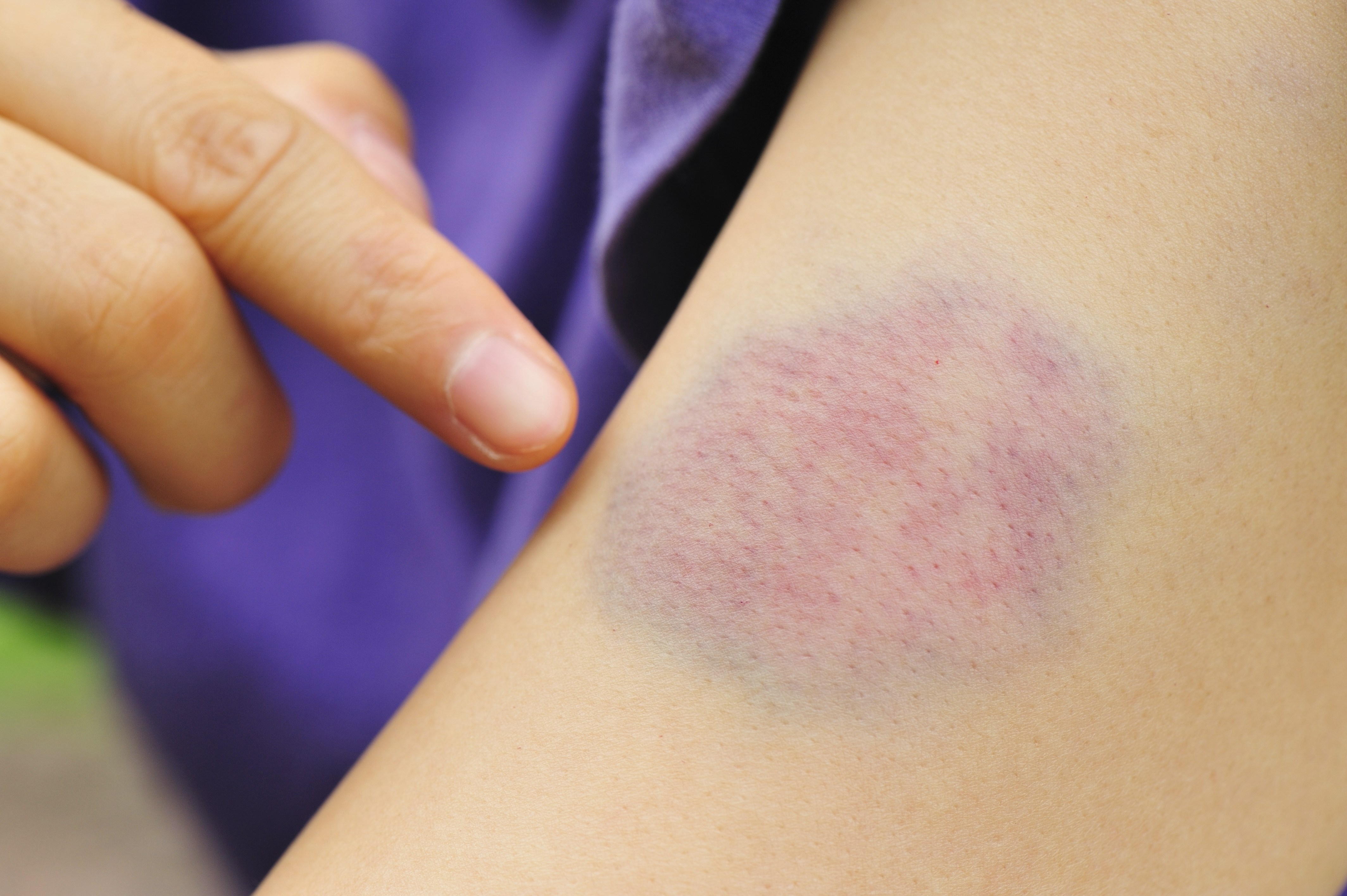 If you buy through links on this page, we may earn a small commission Here’s our process.
If you buy through links on this page, we may earn a small commission Here’s our process.
Medical News Today only shows you brands and products that we stand behind.
Our team thoroughly researches and evaluates the recommendations we make on our site. To establish that the product manufacturers addressed safety and efficacy standards, we:
- Evaluate ingredients and composition: Do they have the potential to cause harm?
- Fact-check all health claims: Do they align with the current body of scientific evidence?
- Assess the brand: Does it operate with integrity and adhere to industry best practices?
We do the research so you can find trusted products for your health and wellness.
Read more about our vetting process.
Was this helpful?
Bruises happen when something damages small blood vessels in the skin. Over time, a bruise can appear red, purple, or darker than the surrounding skin. It may then progress to blue, black, or green.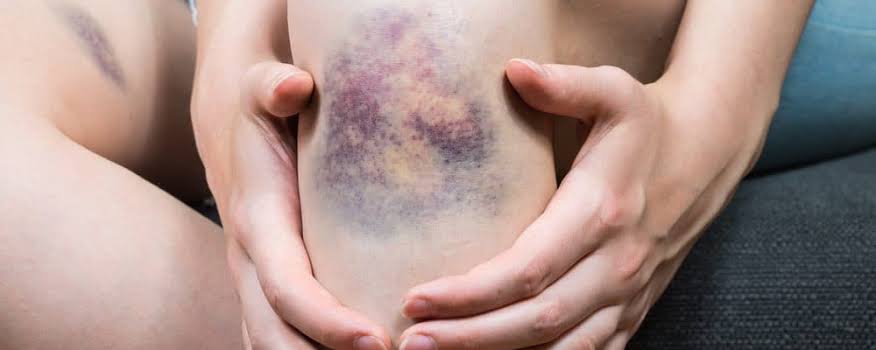
Bruising typically occurs when a person receives an injury to an area of their skin, such as from falling or bumping into something.
The blood vessels between the skin and other tissues in the body burst. The blood pools under the surface of the skin, causing a bruise. It is natural for a bruise to change color during the healing process.
Read on to learn more about the usual cycle of bruising, and when a person should see their doctor about a bruise, for example, when it does not heal, returns or the pain intensifies.
A person may be able to estimate how old a bruise is from the color. As the body heals and breaks down the hemoglobin, or compound that gives blood its red color, the bruise will change in color. This is a regular part of the healing process.
However, skin color affects the appearance of a bruise. Those with medium skin tones had more red and yellow to their bruises, while darker skin tones displayed darker bruises.
During the healing process, a bruise will usually go through the following colors:
- It often starts red because fresh, oxygen-rich blood has newly pooled underneath the skin.

- After around 1–2 days, the blood begins to lose oxygen and change color. A bruise that is a few days old will often appear blue, purple, or even black.
- In about 5–10 days, it turns a yellow or green color. These colors come from compounds called biliverdin and bilirubin that the body produces when it breaks down hemoglobin.
- After 10–14 days, it will turn to a shade of yellowish-brown or light brown.
Finally, once the bruise has turned a light brown, it will begin to fade. Most bruises will disappear without treatment within about 2 weeks.
Bruises are not typically something to cause undue worry. Often, they are a surface injury that requires no medical attention, and people can treat them at home.
But, in some cases, a person may want to seek medical attention for their bruising.
One common issue is a hematoma. A hematoma is a large collection of blood that becomes trapped within tissues. It is often related to more significant trauma.
When a hematoma occurs, the body cannot heal the bruise as easily or quickly as a minor injury. As a result, a hematoma stays the same color, firmness, and causes the same level of pain even after several days.
A person may need medical attention to find out if the hematoma requires further treatment.
The location, size, and cause of the hematoma will determine how to treat it.
Some of the warning signs that a person needs medical attention include bruising that:
- causes an arm or leg to become numb
- causes loss of function of a joint, limb or muscle
- keeps growing in size
- recurs in the same spot or lasts longer than 2 weeks
- happens alongside a broken bone
- occurs on the head or neck
- causes vision impairment
- occurs with no known cause on the abdomen, head, or trunk, as this may signal a problem with an internal organ
Share on PinterestApplying an ice pack to bruised skin can promote healing.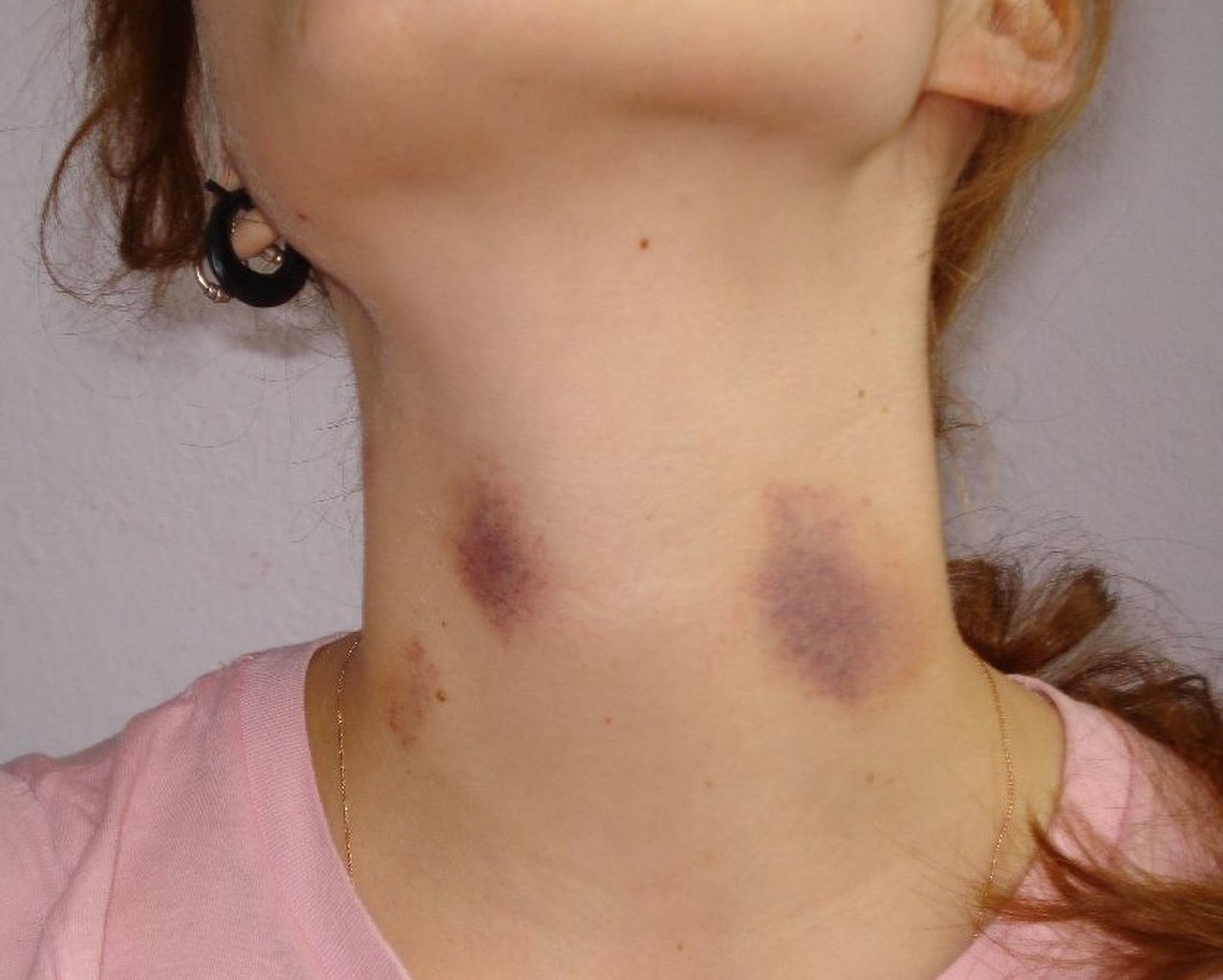
People may want to try to speed healing or lessen any pain associated with bruising. There are some potential at-home methods they can try, as described here:
Use an ice pack
One of the first steps to helping a bruise heal is to apply ice to the area. People can ice the area with anything frozen, such as a freezer pack or a bag of frozen vegetables.
Wrap the cold object in a towel or cloth and apply to the affected area. Do not apply a cold pack directly to the skin, as this can cause further injury.
When a person applies ice to a new bruise, it helps to slow bleeding down and lessen the swelling. This can reduce the overall size of the bruise, as it prevents blood from leaking further and reduces inflammation.
Use healing creams
Many people use arnica, quercetin, vitamin B-3, or vitamin K creams to help speed up bruise healing times.
People can also use over-the-counter pain medicine, such as acetaminophen (Tylenol) and nonsteroidal anti-inflammatory drugs (NSAIDs) to reduce pain and inflammation around the bruise.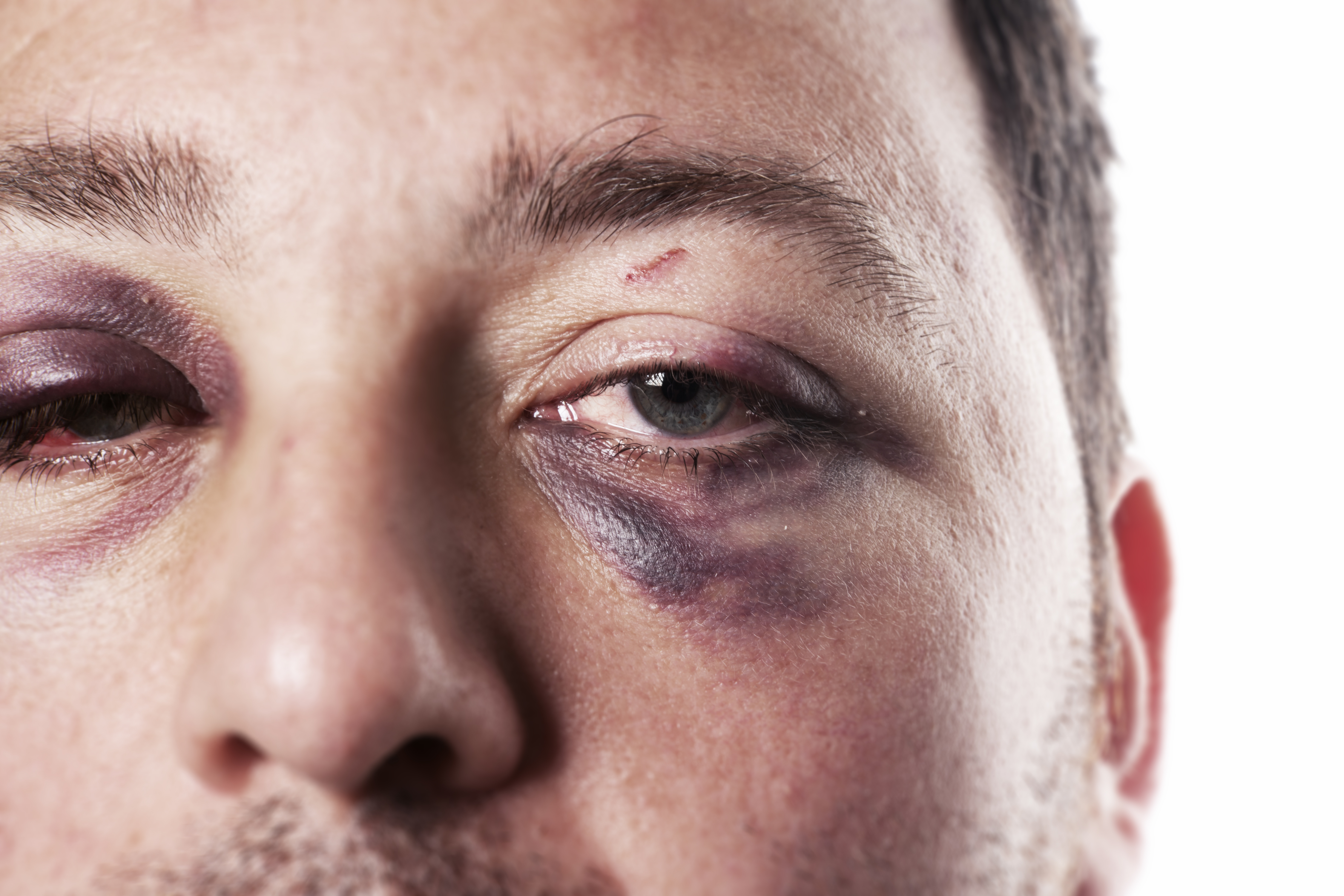 Avoid aspirin, as it can increase bleeding.
Avoid aspirin, as it can increase bleeding.
Avoiding NSAIDs may also be necessary when bruising occurs after surgery or with extensive bruises, as these drugs risk worsening the bleeding. People should check with their doctor before taking any NSAIDs if they have this bruising.
Wrap it up
The use of a soft elastic wrap, during waking hours, for the first 1–2 days can help decrease bruising and discomfort after an injury.
The wrap should be firm but not tight. Numbness, tingling or increased discomfort means the wrap should be loosened or removed.
Raise the affected area
Elevating the bruised area has a similar effect to icing the bruise. It helps prevent the bruise from getting bigger. The individual should raise the affected area to a comfortable position.
Share on PinterestA doctor should inspect bruises that occur with no obvious cause.
A person should seek medical attention any time they have the following symptoms or issues associated with bruising:
- a suspected broken bone
- loss of function of a joint, limb or muscle
- increasing pain
- an area is affected by a bruise that returns
- there is no identifiable cause of the bruising
- the bruise does not heal within 2 weeks
- the bruise interferes with vision
Those taking prescription blood thinners, such as warfarin (Coumadin), should notify their doctor if they experience any falls or signficant injuries.
A doctor can help determine if there is a more severe condition or cause of the bruising that the person does not know about themselves.
In rare cases, bruising can indicate more serious conditions including:
- bleeding disorders, such as hemophilia
- broken bones
- some cancers
- liver problems
Bruising takes on many colors as the body works to heal an injury. It is normal for a bruise to change color over time. A person can expect about four phases of colors to a bruise before it fades away.
If a bruise does not fade, becomes worse, or other issues accompany it, a person should consult a doctor. Otherwise, most bruises should heal within about 2 weeks with no medical treatment.
SHOP FOR AT-HOME METHODS
Some of the at-home methods to speed up healing that we list in this article are available online:
- ice pack
- arnica
- quercetin cream
- vitamin B-3 cream
- vitamin K cream
Why does a bruise change color after a bruise?
Have you ever wondered why bruises have different colors and why do they change color at all? In order to understand, you must first understand how a bruise is formed and what happens to it over time.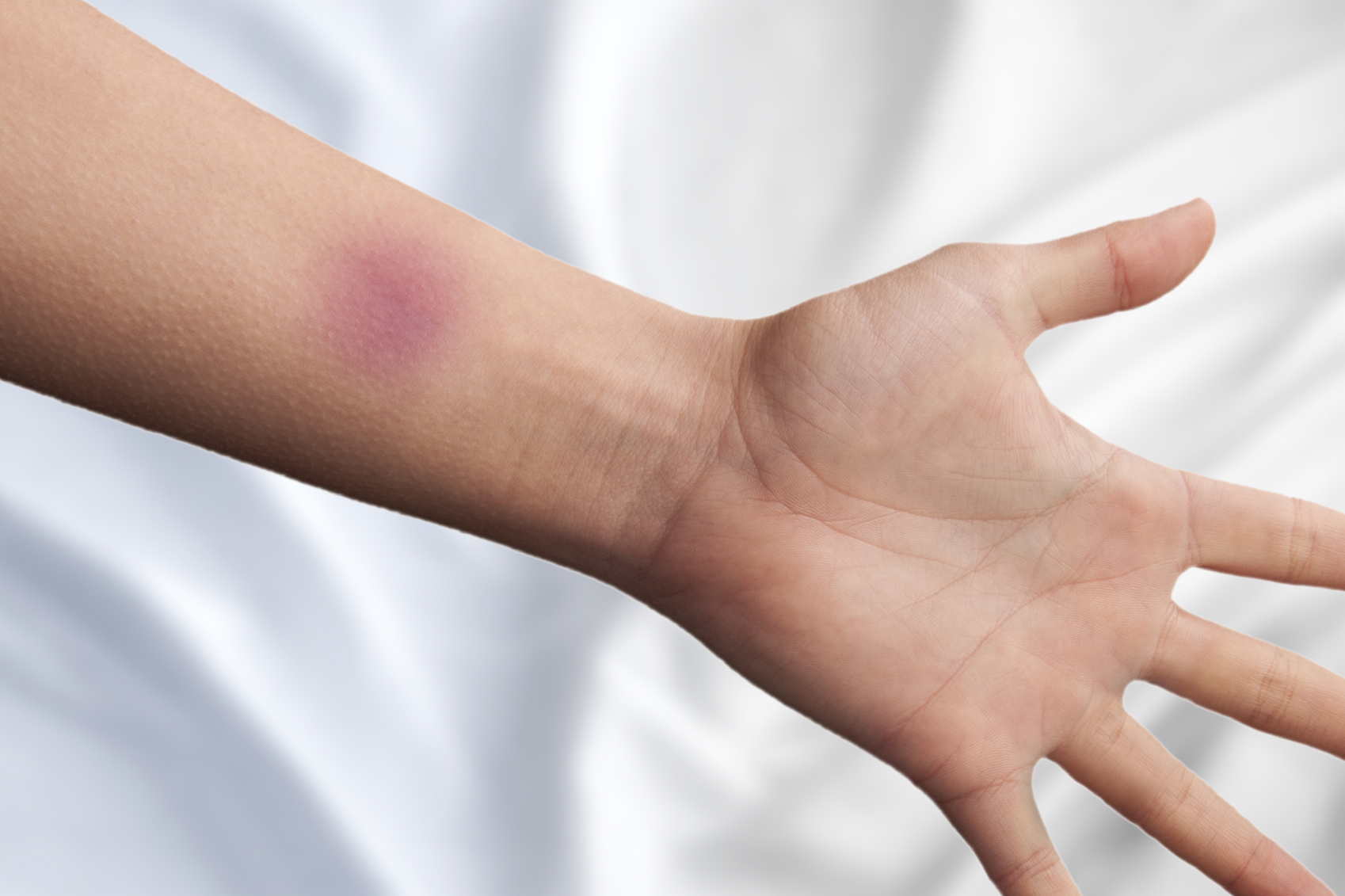
So, bruises, and scientifically “hemorrhages” or “hematomas”, are formed when small vessels are damaged as a result of impact or compression.
The color of a bruise depends on two factors. Firstly, this is the time that has elapsed since the onset of the bruise. Over time, the bruise “blooms” – changes color from burgundy-blue, then greenish to yellow. Secondly, the depth of its occurrence affects the color of the bruise. Superficial bruises usually stay bright purple or purple for longer, but deep bruises may appear yellow-green after a few days.
The change in the color of the bruise is associated with blood hemoglobin and chemical processes. On impact, blood from damaged vessels rushes under the skin, giving the area a red color (from red, oxygenated blood). The oxyhemoglobin then loses oxygen and the bruise turns purple. After that, leukocytes contribute to the breakdown of hemoglobin and it is replaced by biliverdin, a bile pigment that gives the bruise an already greenish tint.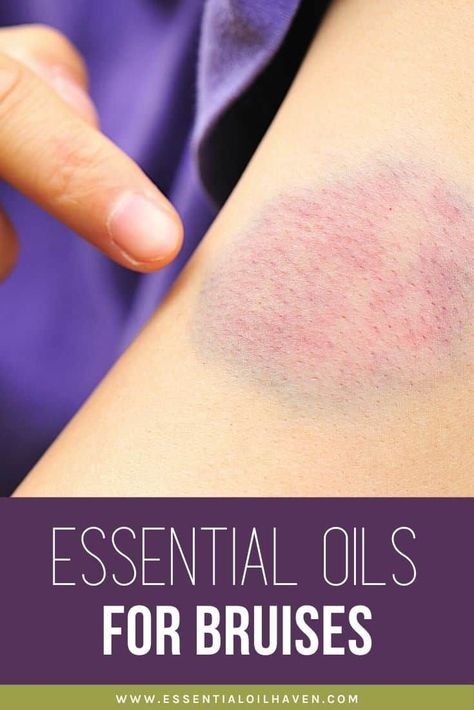 And finally, the last on the bruised place appears bilirubin, which stains the bruise yellow. Sometimes a bruise can be several colors at the same time, which is due to the uneven thickness and depth of the hematoma.
And finally, the last on the bruised place appears bilirubin, which stains the bruise yellow. Sometimes a bruise can be several colors at the same time, which is due to the uneven thickness and depth of the hematoma.
#color #bruise #hematoma #contusion
27 month | Nature
607 1
SHARE
What are the most living organisms on Earth?
What is a pip? And where did the expression “Pip on your tongue” come from?
Why do airplanes still have ashtrays when smoking is prohibited?
What is truism and what is it eaten with?
Why don’t people who snore wake up from their own snoring?
Why is Latin America called “Latin”?
What is anosmia?
Can a sailboat sail faster than the wind?
Why does the beer foam?
How to measure the heat of a pepper?
Why doesn’t gravity push the planets against each other?
Why is Panama so called?
The mystery of toucans: why do they have such a big and strange beak?
What do sarcomas and sarcasm have in common?
Who invented sunglasses?
History of the “recycled” sign
What does the word “shara” mean in the expression “get something on the ball”?
Who is a “deviant”? And what does “deviant behavior” mean?
Why is the warm season called “velvet”?
Where did the expression “pull the gimp” come from?
Who invented ice cream and when?
A brief history of the carousel
Why do people shout “bitterly” at a wedding and where did this tradition come from?
Why do some people have a sunken navel, while others have a protruding one?
Why do we say goodbye with the word “bye”?
What is the Ringelmann effect and how is it related to laziness?
Why are the months of the year called that way?
What does the “crab bucket” theory say?
Where did the expression “neither fish nor fowl” come from?
How is communism different from socialism?
Can you get sunburn through glass?
Who, how and when invented Wi-Fi?
Why is it sometimes possible to see the Moon in the sky during the day, and sometimes not?
What is the Mandela effect? And what about Nelson Mandela?
Why does the wind blow out the fire but blow out the match?
Why does the right hand go back when stepping with the right foot?
Do female animals perform mating matches?
Why doesn’t hydrochloric acid in the stomach burn the stomach itself from the inside?
Where did the phrase “circle your finger” come from?
How was body temperature measured before the invention of the thermometer?
Why was the laundry starched in the past?
Why does a person feel physically tired after a long mental work?
Are there cells in the human body that never divide?
Is it true that you can “make” gold?
If octo is Latin for “eight”, why does an octave contain seven notes?
Why does an airplane seem to be moving very slowly in flight?
How many years can atoms exist?
Why do cats’ eyes glow in the dark?
Why is April 1st a day of laughter?
Why are the bugs buzzing?
Can Iceland be called icy and Greenland green?
What rodent can’t chew?
Why does lemon tea brighten?
FaktoDrom
Viewed
Write to us
How the color of a bruise changes by day
what to do › How long does a bruise last
After 2 -3 days the phenomenon of “blooming” of the bruise appears, and the color changes to purple with blue. Approximately on the 5th day after the formation of a hematoma, due to the destruction of hemoglobin, the bruise becomes yellowish-green.
Approximately on the 5th day after the formation of a hematoma, due to the destruction of hemoglobin, the bruise becomes yellowish-green.
- When the bruise is formed, it has a purple-red color, which later becomes blue-violet with a purple tint.
- After 1-2 days, hemoglobin changes, the bruise becomes blue or black.
- After 2-3 days, the bruise changes to purple with blue.
- After 5 days the bruise turns green or yellow.
- Approximately 10-14 days, the stage of yellowing or light brown color, then the bruise begins to fade.
- In the final stage, the bruise turns yellow, as bilirubin enters the blood.
- Hematoma changes color over time and becomes variegated pink, red, greenish and finally yellow.
- Hemoglobin begins to break down and the green color may last up to 5 days, after which the hematoma becomes yellow-brown.
- The bruise resolves on its own in about 2 weeks without treatment.

- In the affected area, the skin becomes red, then purple-bluish, after a few days – yellow, then after five days – greenish.
- When the bruise turns yellow How long does it last
- What are the stages of bruise color
- When the bruise turns yellow
- How a bruise changes color
- When the bruise turns green
- When the bruise changes color
- When the yellow bruise disappears
- What are the stages of a bruise
- When the bruise turns green
When the bruise turns yellow How long does it last
From 10 to 14 days there is a yellowing or light brown stage depending on the skin tone of each person. At the final stage, they will begin to fade. Most bruises go away on their own in about 2 weeks without treatment. 2.
What are the stages of the color of a bruise?
When a bruise first appears, it is slightly red in color as there is blood under the skin. Within 1-2 days, hemoglobin (an iron-containing substance that carries oxygen) in the blood changes, and the bruise becomes bluish-purple or even black. After 5-10 days, the bruise turns green or yellow.
Within 1-2 days, hemoglobin (an iron-containing substance that carries oxygen) in the blood changes, and the bruise becomes bluish-purple or even black. After 5-10 days, the bruise turns green or yellow.
When the bruise turns yellow
In the end, the bruise turns yellow, as a special pigment called bilirubin enters the area of inflammation. Blood eventually removes bilirubin from the body, which contributes to the complete disappearance of the bruise.
How a bruise changes color
Over time, the hematoma changes color, becoming variegated pink, red, greenish and finally yellow. Yellow color means that soon the bruise will completely disappear. This is due to the resorption of blood containing hemoglobin, during the breakdown of which pigments are formed (biliverdin – green, bilirubin – yellow).
When the bruise turns green
This is because hemoglobin starts to break down. This darkening can last up to five days. The decomposition products of hemoglobin are biliverdin (green bile pigment) and bilirubin (yellow-red bile pigment), so around the sixth day the hematoma turns green and then turns yellow-brown.


